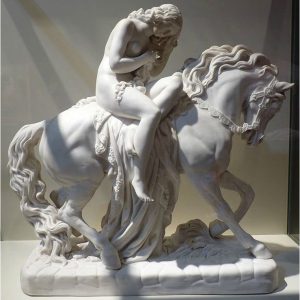John Thomas
Showing the single result
John Thomas (1813–1862) emerged as a celebrated British sculptor and architect, renowned for his remarkable contributions to iconic structures like Buckingham Palace and the Palace of Westminster. His journey began in Chalford, Gloucestershire, where he was born into an unfortunate circumstance of orphanhood. Despite this adversity, fate led him to an apprenticeship with a skilled stonemason, shaping the course of his life.
Destiny took a favorable turn when John Thomas relocated to Birmingham, drawn by the presence of his elder brother, William, an accomplished architect. While in Birmingham, Thomas’s talent and dedication caught the discerning eye of none other than Charles Barry, a prominent figure in the architectural world. Impressed by his skills, Barry wasted no time in engaging John Thomas as a stone and wood carver for the Birmingham Grammar School, a project done in collaboration with the esteemed Augustus Welby Northmore Pugin.
With his star on the rise, John Thomas received a momentous appointment from Barry, positioning him as the Superintendent of Stone Carving at the illustrious Palace of Westminster in London. In this role, Thomas assumed responsibility for crafting sixty magnificent statues of English monarchs, including those adorning the niches of the Central Lobby, showcasing his exceptional craftsmanship.
Thomas’s artistic brilliance extended beyond grand structures, as evidenced by his work ‘Charity,’ showcased at the prestigious Great Exhibition of 1851. A testament to his emotive artistry, the piece was later adapted into a memorial at Christ Church, Chalford, dedicated to his beloved late brother, Richard.
His final masterpiece came in the form of a colossal statue of William Shakespeare, exhibited at the 1862 International Exhibition. However, a disagreement over its placement marred the joy of his achievement, hastening his tragic demise in April 1862. He was laid to rest in the tranquil surroundings of Kensal Green Cemetery, London.
John Thomas’s artistic legacy reached beyond sculptures and extended to a massive majolica fountain, measuring 30 ft. high and 40 ft. in diameter. This captivating creation, displayed at the 1862 exhibition, once adorned the grounds outside the V&A Museum of Childhood, leaving an indelible impression on spectators until its eventual demolition in 1926.
Thus, from humble beginnings to becoming a prominent artist of his time, John Thomas’s remarkable journey in the world of art and architecture continues to inspire awe and admiration for generations to come.


